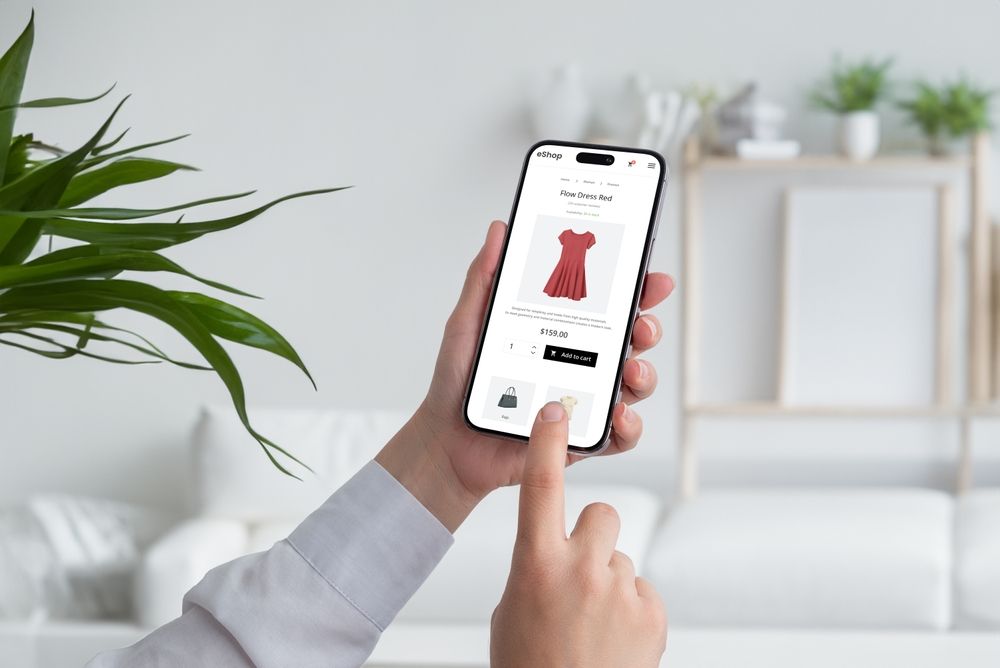The M-Commerce Boom: How Smartphones Are Shaping Shopping

Over the past decade, mobile commerce (m-commerce) has become a major force in shaping how people shop. With smartphones playing a bigger role in purchasing decisions, retailers are encountering fresh challenges while also discovering new opportunities. Adapting to these changes is now crucial for businesses aiming to stay ahead in an increasingly competitive environment.
Consumers want convenient, on-the-go shopping. This makes m-commerce a key asset for retailers who want to grow. Mobile commerce is rapidly expanding, driven by advances in e-commerce tech, yet it brings its own set of challenges that brands must address to unlock its full potential.
The Rise of Mobile Commerce
Mobile commerce has rapidly evolved from being a supplementary sales channel to a core part of the retail strategy. According to Statista, m-commerce retail sales in the UK are expected to reach £100 billion by 2025. Consumer trends show that more people are using smartphones. Faster mobile networks also help this growth. Many consumers prefer the convenience of digital options.
For retailers, this means adapting to a predominantly mobile-first environment. Consumers now use their smartphones to browse new collections, compare prices, read reviews, and make purchases. Mobile commerce provides them with the flexibility to shop anywhere and anytime, making it a critical touchpoint in their buying journey.
The COVID-19 pandemic further accelerated this shift, as lockdowns forced consumers to rely more on digital channels. Mobile shopping apps saw a surge in downloads, and retailers that had already invested in m-commerce infrastructure were better positioned to meet the sudden demand. This increased reliance on mobile devices is unlikely to wane, making m-commerce a permanent fixture in the retail ecosystem.

Breaking Down the Growth of Mobile Commerce
Several trends are driving the expansion of mobile commerce. Understanding these trends can help brands stay ahead of the curve and optimise their m-commerce strategies.
Mobile-First Consumer Behaviour
Modern consumers, especially younger generations, prefer mobile shopping for its speed, convenience, and personalisation. Research shows that 79% of customers order and shop via their mobile phones, a figure that continues to grow. The millennial and Gen Z segments, in particular, are digital natives who expect a mobile-first experience, from browsing to checkout.
Retailers need to optimise their websites and apps to cater to this behaviour, offering intuitive interfaces, fast load times, and secure, seamless payment options. Progressive web apps (PWAs) are becoming increasingly popular, as they combine the best features of mobile websites and native apps, providing a smooth and engaging user experience.
Social Commerce Integration
Social media platforms like Instagram, TikTok, and Pinterest have blurred the lines between social networking and shopping. Brands are capitalising on this by integrating e-commerce technology functionalities directly into social platforms, allowing users to purchase products without ever leaving the app. Instagram’s “Shop” feature and TikTok’s shoppable videos are examples of how social commerce is transforming mobile retail.
For retailers, the key is to leverage these platforms not just for brand exposure but also for driving sales. The rise of influencers and micro-influencers has further amplified this trend, as their endorsements often lead to instant mobile purchases. Retailers must develop strategies that integrate social media engagement with seamless m-commerce pathways, ensuring that discovery and transaction occur within the same ecosystem.
Voice Commerce
Voice commerce, fueled by the increasing popularity of virtual assistants like Siri, Alexa, and Google Assistant, is rapidly gaining traction as a key player in the mobile commerce space. Although still in its early stages, voice-enabled shopping presents a new level of convenience by allowing consumers to use simple voice commands to search for products, compare prices, and even complete purchases without lifting a finger.
As voice commerce continues to develop, its potential impact on the retail landscape is enormous. They are able to understand user preferences, suggest relevant products, and offer personalised recommendations. This transforming the shopping experience into a more intuitive, hands-free process. This innovation is particularly appealing for busy consumers who value efficiency and multitasking in their daily routines.
Mobile Payments
Digital wallets like Apple Pay, Google Pay, and PayPal have revolutionized the way consumers make transactions by offering secure and highly convenient payment solutions. With just a tap or a scan, users can complete purchases both online and in physical stores, making the checkout process faster and more accessible.
The rise of near-field communication (NFC) technology, paired with seamless app integrations, has empowered consumers to make payments without needing cash or even cards, marking a fundamental shift in consumer behavior. This convenience has been a driving force behind the rapid adoption of mobile payments worldwide.
Adopting multiple mobile payment methods and ensuring a smooth, secure checkout process is vital. Simplifying the payment experience can reduce cart abandonment rates and increase overall mobile conversion rates.

Challenges Facing Retailers in Mobile Commerce
While the growth of m-commerce presents significant opportunities, it also comes with challenges that retailers must address to stay competitive.
Mobile Optimisation and User Experience
One of the biggest challenges for retailers is optimising their websites and apps for mobile devices. A slow, clunky, or poorly designed mobile experience can deter customers and lead to lost sales. Mobile shoppers expect fast load times, intuitive navigation, and responsive design that works across various devices and screen sizes.
Retailers must invest in mobile optimisation, ensuring that their websites and apps are easy to use and visually appealing on smartphones. This includes compressing images for faster loading, simplifying navigation menus, and ensuring that product pages are mobile-friendly.
Mobile Security and Data Privacy
As m-commerce grows, so too do concerns about security and data privacy. Consumers are increasingly wary of sharing personal and financial information online, particularly on mobile devices. Retailers must prioritise data security, offering encrypted payment methods and secure authentication processes.
Compliance with data protection regulations, such as the General Data Protection Regulation (GDPR) in Europe, is also crucial. Retailers must be transparent about how they collect and use customer data, providing clear opt-in mechanisms and privacy policies.
App Fatigue and User Retention
Although mobile apps offer a great way to engage customers, not every shopper wants to download and keep an app for each retailer they shop with. App fatigue is a real issue, with consumers becoming selective about which apps they download and retain.
Retailers must provide compelling reasons for customers to use their apps, such as exclusive offers, personalised content, or loyalty rewards. Developing lightweight, engaging PWAs can also address app fatigue, as they require no downloads and provide similar functionality to native apps.
Cross-Channel Consistency
Consumers now expect a seamless shopping experience across multiple channels—whether they’re browsing on their mobile, shopping in-store, or using a desktop. Ensuring consistency across these channels is a significant challenge for retailers. Inconsistent pricing, promotions, or product availability across platforms can frustrate customers and erode brand trust.
Retailers must integrate their mobile commerce efforts with broader omnichannel strategies, ensuring that their mobile platforms align with in-store and desktop experiences. This includes offering click-and-collect services, unified loyalty programmes, and consistent customer support.
The growth of e-commerce technology trends such as mobile commerce highlights how convenience and accessibility are reshaping the way we shop, interact, and conduct business. As smartphones become an integral part of everyday life, consumers are increasingly embracing mobile technology to simplify tasks, from browsing products to making secure payments.
Society’s growing comfort with mobile technology underscores a broader cultural shift toward a digital-first economy. While challenges such as data privacy and cybersecurity remain critical concerns, the benefits of m-commerce continue to drive its widespread adoption. As businesses and consumers adapt, mobile commerce will undoubtedly continue to play a central role in the future of global commerce, pushing the boundaries of innovation and redefining the customer experience
We’re looking for insightful guest contributors for Autumn Fair! If you have a fresh perspective on retail trends, e-commerce, consumer behaviour and more, we’d love to feature your expertise. Share your knowledge, build your brand and connect with a community of industry professionals.

)
)
)
)
)
)
)
)
)
)
)
)
)
)
)
)
)
)
)
)
)
)
)
)
)
)
)